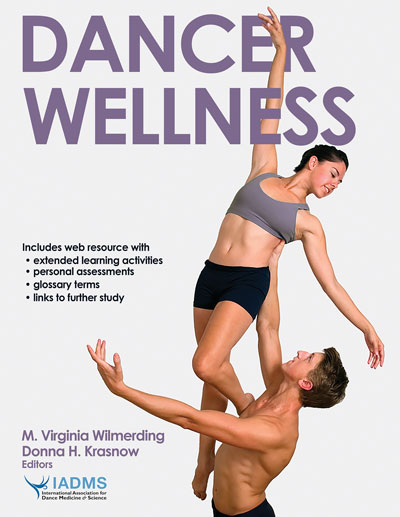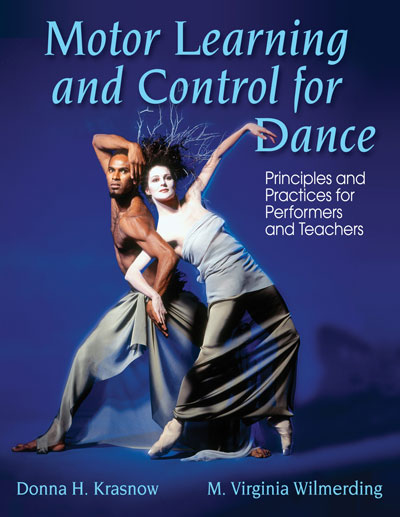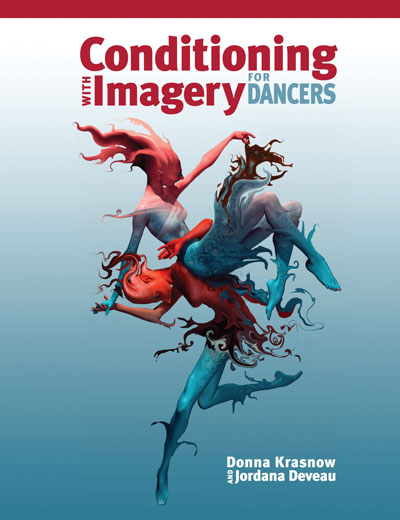Donna Krasnow

I was born in 1949 in Fukuoka, Japan, of American parents, and I always had Japanese works of art in my home as a child. Looking back, I believe this environment encouraged my exploration of eastern philosophy and movement practices later in life as part of my education. In 1967, I went to the University of California, Berkeley, and majored in mathematics, but in my second year I enrolled in a dance class as an elective. In 1971, I completed my bachelor’s degree in mathematics, and in 1973, I completed my bachelor’s degree in theater arts/dance. It was dance that I chose to pursue professionally. However, as someone who began dance training quite late and danced intensively, I faced a number of injuries in those early years, which was the catalyst for pursuing knowledge in the areas of injury care and rehabilitation, and eventually led me to studies beyond traditional dance training. The first of these practices was yoga, and it was this work that suggested to me the mind/body connection, and the potential of mental focus to change movement patterns.
I began studies of anatomy and kinesiology at Mills College in Oakland, but I did not complete my master’s degree at that time, as I wanted to continue professional dance opportunities and my growing teaching practice. In 1980, I traveled to New York and was introduced to Zena Rommett’s floor barre. At about this same time, I read Lulu Sweigard’s Human Movement Potential: Its Ideokinetic Facilitation and Mabel Todd’s The Thinking Body. The intersection of these events was a turning point for me in my understanding of how to affect change in the body, as well as how I might be a more effective educator. Rommett’s work exemplified slowing down and deeply focusing on how the body was moving, not just what the body was attempting to do. Sweigard and Todd introduced me to the concept of “neuro-physical”, and the importance of the neurological system and its function in motor behavior. I was fascinated and enthralled by Sweigard’s immense treasury of imagery, and I began implementing that work into my dancing and my teaching.
At the same time, I was developing what would eventually be called C-I Training™, Conditioning with Imagery. It seemed to me that while both traditional conditioning exercises and somatic practices each had value for dancers, was there a way that imagery could be implemented or integrated into conditioning work? Was imagery a useful tool in facilitating transfer of training from conditioning to complex dancing? Could this combination provide an efficient way to teach the neurological system how to utilize the newly acquired changes to strength and flexibility? I began to use the terms recruitment (instead of strength) and release (instead of flexibility) to suggest the neural component of conditioning work.
In August 1989, I presented the lecture “Psychological aspects of postural re-alignment and injury prevention” at the Seventh World Congress in Sport Psychology in Singapore, August 1989, as part of a forum with Dr. Lynda Mainwaring on dance psychology and issues for athletes and dancers including alignment and injury prevention. It was at this conference that I wrote out the five principles of C-I Training, at the encouragement of Dr. John Salmela, the Vice President of the International Society of Sport Psychology. These were: Integration Principle, Increasing Principle, Alternating Principle, Specificity Principle, and Attentiveness Principle. (For a detailed description of these principles, please refer to the article C-I Training: The Merger of Conditioning and Imagery as an Alternative Training Methodology for Dance, published in the journal Medical Problems of Performing Artists in March 1997; https://www.citraining.com/pdfs/C-I-Training.pdf.)
In 1992, I spent time living in a Taoist monastery in Hawaii, studying Qi Gong and Taoist philosophy. From there, I traveled to Japan, and studied Noh Theatre, Bugaku dance, and Butoh dance. I was intrigued by the observation that movement in some cultures seems to be linked to healing, while in our culture, it is so often a source of injury. The common threads I found in all of these eastern forms were focus, awareness, and breath, such important factors in somatic practices.
From 1992-1994, I attended the University of Oregon, receiving my master’s degree in dance science. My thesis was a research project entitled Integration of Imagery into Conditioning Practices for Dancers. In this research I compared groups of dancers doing traditional conditioning, Ideokinesis sessions, C-I Training, and a control group. While the dancers doing Ideokinesis reported experiencing changes in alignment and awareness, they were less able to apply these changes to faster movement, whereas the C-I Training group showed significant alignment organization at fast-paced dance movement. The conditioning only group demonstrated little change either in slow or fast movement challenges.
Shortly after my studies at the University of Oregon, I did two other major presentations of the work:
(1) “Imagery and conditioning practices for dancers.” 5th Annual International Association for Dance Medicine & Science Conference. Tel Aviv, Israel, June 1995.
(2) “A conditioning system with visualization.” Keynote speaker and workshop presenter at the Kinesiological and Somatic Perspectives in Dance Conference. Montréal, Canada, May 1996.
In 1998, I produced a three-video series of C-I Training, and in 2010, I published my first book Conditioning with Imagery for Dancers, published by Thompson Educational Publishing Company, with co-author and dance artist Jordana Deveau. The text explains the purpose and execution of each exercise, along with numerous images that can be used during the work. By this time, I was reading and studying in the field of motor behavior, and I was understanding the value of having a rich palette of imagery for the variety of learning strategies that individual dancers exhibit. Sweigard’s work further enriched this pedagogy.
In 2008, with the assistance of Andrea Downie, I began a series of certification courses for teachers in C-I Training. She and I both felt that it was essential for teachers to understand all of the components that C-I Training incorporated, including the anatomical reasoning behind the material, the musicality, and the somatic mindfulness necessary to ensure transfer of training from conditioning work to complex dancing. She and I continue to give these courses each year.
In 2012, I completed my PhD in dance science through the University of Wolverhampton in the United Kingdom, exploring various aspects of motor control in dancers for my dissertation. I was particularly fascinated by the issue of weight transfer, and how dancers approach weight transfer while doing complex movement. The most significant finding from this research was that movement executed standing in a stationary location uses an entirely different motor strategy than material that moves through space, even when the movements may appear to be the same.
Just after completing the PhD, I was contacted by Human Kinetics Publishers, and asked to write book on motor behavior specifically for dancers. In 2015, Dr. Virginia Wilmerding and I completed Motor Learning and Control for Dance: Principles and Practices for Performers and Teachers. Although there are numerous sports texts on motor learning and control, none include any discussion of somatic practice or its important contribution to training. We persuaded the publisher that this was a crucial area of motor behavior for dancers, and its inclusion in the book was essential. Therefore, in Chapter 1, Foundations of Motor Behavior, we spend considerable time discussing the importance of somatic practice, in the following sections:
Historical Development of Dance Pedagogy
Somatic Practice
Influences of Motor Behavior Studies and Somatic Practice on Dance Training
Shortly thereafter, Dr. Wilmerding and I were asked by Human Kinetics to edit a book in collaboration with the International Association for Dance Medicine & Science called Dancer Wellness, published in 2017. Once again, we felt that the inclusion of somatic work and imagery were essential components of dancer wellness. In this book we included the following:
Part II Mental Components of Dancer Wellness
Chapter 4. Mental Training by Janet Karin, Patrick Haggard, and Julia Christensen
Note: This chapter contains a section on somatic practice and sensory awareness, a section on imagery, and a section on mindfulness
Chapter 5. Psychological Wellness by Lynda Mainwaring and Imogen Aujla
Chapter 6. Rest and Recovery by Glenna Batson and Margaret Wilson
Finally, C-I Training has been a strong part of my resumé resulting in a number of awards over the years, including the National Dance Education Organization Lifetime Achievement Award, the Healthy Dancer Canada Lifetime Achievement Award, and the International Association for Dance Medicine & Science Dance Educator Award. It is recognized as an important development in the field, and as a method through which dance students can come to understand and embody the neuromuscular aspects of dance training. It is through the work of Todd and Sweigard that I have been able to recognize and incorporate these important philosophies into my own work.
For more information, please visit www.citraining.com, which provides information on my background, articles, resource papers, books and book chapters, videos, and certification courses in C-I Training for teachers.
— Donna H. Krasnow, PhD (2023)
BOOKS IN PRINT
BIBLIOGRAPHY
PUBLISHED BOOKS
Dancer Wellness, an organizational book co-edited with Dr. Virginia Wilmerding, a collaborative project between Human Kinetics Publishers and the International Associaton for Dance Medicine & Science, published by Human Kinetics Publisher in October 2016. Available at: https://us.humankinetics.com/products/dancer-wellness-with-web-resource?_pos=1&_sid=c4ae69692&_ss=r
La Danza El entrenamiento total del bailarin, the Spanish translation of Dancer Wellness, published by Paidotribo in 2018. Available at:
https://www.amazon.com/s?k=La+Danza+krasnow&i=stripbooks&ref=nb_sb_noss
Motor Learning and Control for Dance: Principles and Practices for Teachers and Performers, in collaboration with Dr. Virginia Wilmerding, published by Human Kinetics Publishers in July 2015. Available at:
http://www.humankinetics.com/products/all-products/Motor-Learning-and-Control-for-Dance
Conditioning with Imagery for Dancers, published by Thompson Educational Publishing Company, Toronto, Canada, in December 2010. Cover illustration by Martin Murphy, photography by Gary Ray Rush, co-author Jordana Deveau. Available at: http://thompsonbooks.com/higher-ed/sport-in-society/conditioning-imagery-dancers-9781550772074/
PUBLISHED BOOK CHAPTERS
Applying Research Findings to Practice
D. H. Krasnow, Ph.D., and V. Wilmerding, Ph.D.
Chapter in J. Ambegaonkar, L. Mainwaring, & T. Welsh (Eds.), Research methods in the dance sciences (pp. 313-327), 2023.
Creating a Motor Learning Model for Dance Training
V. Wilmerding, Ph.D., and D. H. Krasnow, Ph.D.
Chapter in S-H. Lee, M. L. Morris, & S. V. Nicosia (Eds.), Perspectives in performing arts medicine practice: A multidisciplinary approach (pp. 287-294), 2020.
PUBLISHED ARTICLES AND RESOURCE PAPERS
Motor Control and Dance
V. Wilmerding, Ph.D., and D. Krasnow, PhD.
Resource paper for Healthy Dancer Canada, 2022.
Motor Development and the Young Dancer
D. Krasnow, Ph.D., and V. Wilmerding, Ph.D.
Resource paper for Healthy Dancer Canada, 2021.
Defining Posture and Alignment
D. Krasnow, Ph.D., and A. Downie, M.A.
Dance Current, Winter 2021.
A Guide to Neutral Pelvis, Core Support, and Trunk Stabilization: A Resource for Dancers and Dance Educators
Donna Krasnow, Ph.D., and Virginia Wilmerding, Ph.D.
Resource paper for Healthy Dancer Canada, 2017.
Turnout for Dancers: Supplemental Training
Donna Krasnow, M.S., and M. Virginia Wilmerding, Ph.D.
Resource paper for the International Association for Dance Medicine & Science, 2011.
Turnout for Dancers: Hip Anatomy and Factors Affecting Turnout
M. Virginia Wilmerding, Ph.D., and Donna Krasnow, M.S.
Resource paper for the International Association for Dance Medicine & Science, 2011.
Biomechanical Research in Dance: A Literature Review
Donna Krasnow, M.S., M. Virginia Wilmerding, Ph.D., Shane Stecyk, Ph.D., ATC, CSCS, Matthew Wyon, Ph.D., and Yiannis Koutedakis, Ph.D.
Medical Problems of Performing Artists • March 2011.
Teaching the Dance Class: Strategies to Enhance Skill Acquisition, Mastery, and Positive Self-Image
Lynda Mainwaring, Ph.D., C.Psych., and Donna Krasnow, M.S.
Journal of Dance Education • Volume 10, Number 1, 2010.
Motor Learning and Teaching Dance
Virginia Wilmerding, Ph.D., and Donna Krasnow, M.S.
Resource paper for the International Association for Dance Medicine & Science, 2009.
Effective Use of Turnout: Biomechanical, Neuromuscular, and Behavioral Considerations
Gayanne Grossman, Ed.M., P.T., Donna Krasnow, M.S., and Thomas M. Welsh, Ph.D.
Journal of Dance Education • Volume 5, Number 1, 2005.
A Teacher’s Guide to Helping Young Dancers Cope with Psychological Aspects of Hip Injuries
Lynda Mainwaring, Ph.D., C.Psych., Donna Krasnow, M.S., and Lauren Young
Journal of Dance Education • Volume 3, Number 2, 2003.
Emerging Concepts of Posture and Alignment
Donna Krasnow, M.S., Rita Monasterio, M.S., and Steven J. Chatfield, Ph.D.
Medical Problems of Performing Artists • March 2001.
Imagery and Conditioning Practices for Dancers
Donna H. Krasnow, M.S., Steven J. Chatfield, Ph.D., Sherrie Barr, M.F.A., Jody L. Jenson, Ph.D., and Janet S. Dufek, Ph.D.
Dance Research Journal • 29/1, Spring 1997.
C-I Training: The Merger of Conditioning and Imagery as an Alternative Training Methodology for Dance
Donna Krasnow, M.S.
Medical Problems of Performing Artists • March 1997.
Dance Science and the Dance Technique Class
Donna Krasnow, M.S., and Stephen J. Chatfield, Ph.D.
Impulse • 4, 162-172, 1996.
LINKS
Link to order all books by Donna Krasnow from Amazon.com and Amazon.ca:
https://www.citraining.com/Books-and-Video-Store.html
Link to order C-I Training videos:
https://www.citraining.com/Order-Forms.html
Website for information about certification courses for teachers
https://www.enhancedance.com/c-i-training-teacher-courses.html
© 2023 Thinking Body Institute. All rights reserved. Reprint with permission only.


